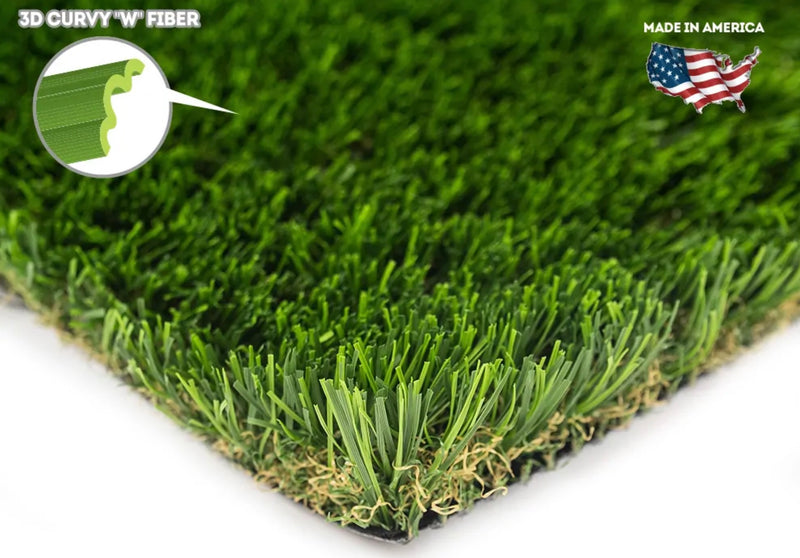Look Into the Environmental Benefits of Opting for Artificial Lawn Solutions
The fostering of synthetic grass services provides an engaging opportunity to attend to pushing environmental obstacles. By significantly lowering water usage and lessening the application of damaging chemicals, these alternatives not just advertise lasting landscaping however also safeguard regional ecosystems. The lower carbon footprint linked with decreased upkeep tasks adds to a more sustainable technique to land monitoring. Nevertheless, the effects of these benefits extend past simple conservation efforts, questioning about their lasting effect on environment conservation and total ecological equilibrium. Checking out these dimensions exposes an intricate interaction worth taking into consideration.
Water Conservation Perks
Among the most substantial benefits of synthetic grass is its capacity to save water. Conventional grass yards need significant watering, especially in locations susceptible to dry spell or water constraints. On the other hand, synthetic grass does not need watering, substantially reducing the total need for water sources. This attribute is specifically beneficial in deserts where water deficiency is a pressing problem.
By getting rid of the need for normal watering, fabricated lawn contributes to lasting landscape techniques and aids mitigate the ecological impact of excessive water usage. Moreover, the preservation of water reaches the reduction of overflow, which can lead to soil disintegration and river pollution.
In addition, the setup of synthetic lawn enables municipalities and home owners to designate water sources more efficiently, concentrating on necessary usages such as drinking water and agriculture. The shift towards synthetic grass not just promotes responsible water usage but likewise lines up with wider ecological objectives intended at preserving natural resources.
As communities progressively focus on sustainability, the water conservation advantages of synthetic grass present a compelling case for its adoption in property and commercial landscaping tasks.
Reduced Chemical Use
The shift to artificial grass substantially reduces the reliance on chemical treatments typically utilized in natural turf upkeep. Standard grass monitoring usually includes the application of plant foods, chemicals, and herbicides to promote growth and control parasites. These chemicals can posture risks to human wellness, regional wildlife, and the atmosphere, contributing to soil and water contamination.
In comparison, synthetic grass removes the need for these damaging compounds. Once set up, it calls for marginal upkeep, primarily containing routine cleaning and irregular infill replenishment. This reduction in chemical usage not just benefits the prompt atmosphere yet additionally contributes to broader eco-friendly stability. By minimizing the release of artificial substances into the ecological community, man-made grass promotes much healthier soil and water supply.
Furthermore, the lack of chemical drainage connected with synthetic grass setups helps protect neighborhood rivers from air pollution, sustaining marine life and maintaining biodiversity. Phoenix turf companies. As areas significantly focus on lasting practices, deciding for synthetic grass provides a feasible option that aligns with ecological preservation objectives. With this shift, homeowner can enjoy lush green rooms without compromising eco-friendly wellness, paving the means for an extra lasting future
Lower Carbon Impact

Additionally, the setup of synthetic grass can lead to significant water preservation. Natural grass need substantial quantities of water for irrigation, which not just contributes to the carbon impact connected with water extraction and treatment yet likewise stress local water sources. On the other hand, synthetic grass needs marginal upkeep, requiring no watering, thus significantly basics minimizing water usage and its associated power expenses.
Additionally, the durability of synthetic grass adds to its reduced carbon influence. With a life expectancy of as much as 15 years or even more, the demand for frequent substitutes is reduced, resulting in less waste and reduced energy intake in manufacturing and disposing of typical lawn options. In general, synthetic turf offers a lasting option for eco mindful landscaping.
Habitat Preservation
Habitat preservation is an essential factor to consider in the debate over landscaping selections, particularly when comparing synthetic grass to all-natural yard. All-natural grass lawns often call for extensive upkeep, consisting of using herbicides, fertilizers, and pesticides, which can negatively affect regional ecological communities. These chemicals can leach right into the dirt and rivers, hurting native vegetation and fauna and disrupting neighborhood habitats.
Synthetic grass gets rid of the need for damaging chemicals, therefore safeguarding neighboring wild animals and maintaining the stability of surrounding ecological communities. The setup of fabricated lawn can lead to the conversion of previous grass areas right into more biodiverse landscapes, such as pollinator gardens or native plant areas, which can sustain neighborhood wild animals.
Ultimately, the transition to artificial grass not only preserves water and lowers upkeep efforts but also fosters an extra unified connection in between human tasks and the all-natural setting, advertising environment conservation while doing so.
Long-Term Sustainability
Long-lasting sustainability is a critical consider reviewing the advantages of artificial turf over typical yard lawns. Among one of the most considerable benefits of synthetic grass is its longevity; it can last approximately 15-20 years with marginal maintenance, whereas natural turf requires regular reseeding and substitute. This longevity lowers the demand for consistent sources, such as water, plant foods, and pesticides, which are crucial for keeping a healthy and balanced yard lawn.
Furthermore, look at this website synthetic grass adds to a decrease in carbon discharges connected with yard treatment equipment. Traditional grass commonly need gas-powered lawn mowers, leaners, and blowers, all of which contribute to air contamination. Arizona artificial turf. On the other hand, fabricated grass gets rid of the requirement for such tools, promoting a cleaner environment
In addition, the manufacturing of man-made grass significantly utilizes recycled materials, enhancing its sustainability profile. As makers adopt environment-friendly techniques, the ecological impact of synthetic grass proceeds to diminish.

Conclusion
The adoption of artificial lawn solutions presents significant ecological benefits, including considerable water conservation, reduced reliance on hazardous chemicals, and a lower carbon footprint. Furthermore, synthetic grass help in protecting natural habitats by reducing land disruption and advertising long-lasting sustainability with the use of durable products. Collectively, these factors emphasize the capacity of artificial lawn to add favorably to ecological health and wellness and supply a sensible alternative to traditional landscaping methods in a progressively resource-conscious world.
In comparison, man-made grass does not require watering, dramatically reducing the general need for water sources. By reducing the release of artificial substances into the community, artificial grass promotes healthier soil and water systems.
Moreover, the installment of synthetic lawn can result in substantial water conservation. In contrast, artificial turf requires marginal upkeep, needing no watering, thus considerably reducing water use and its associated power expenses.
